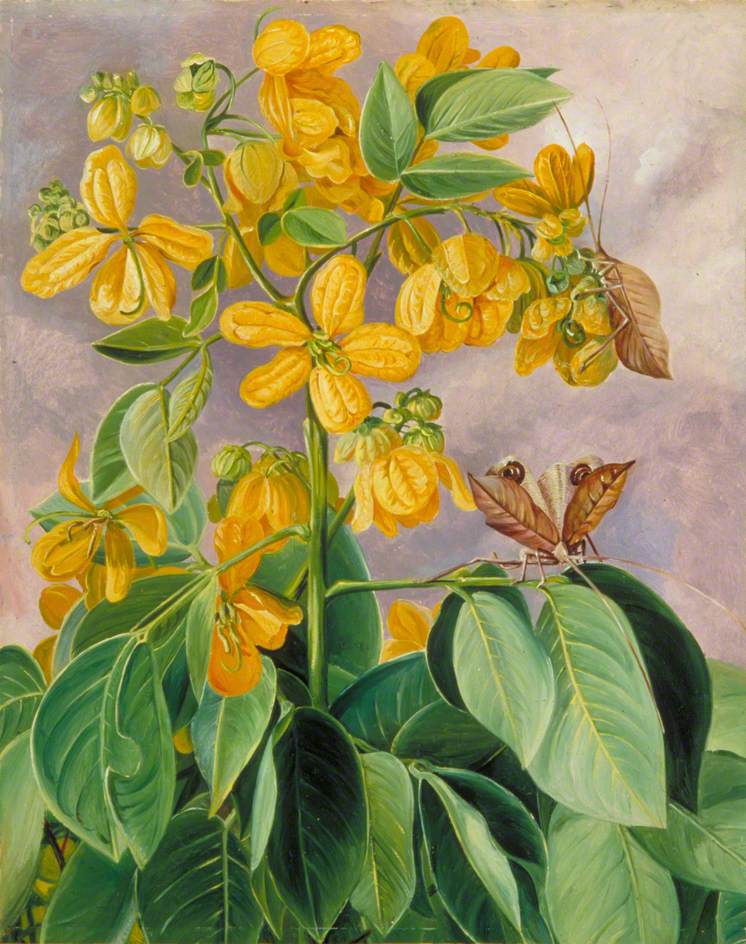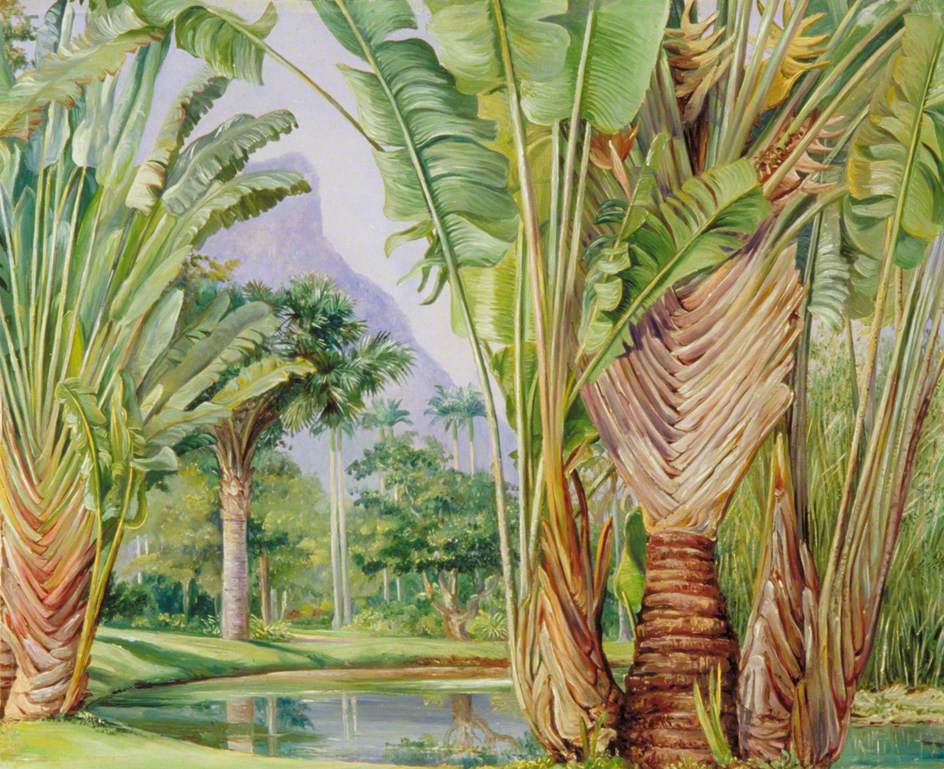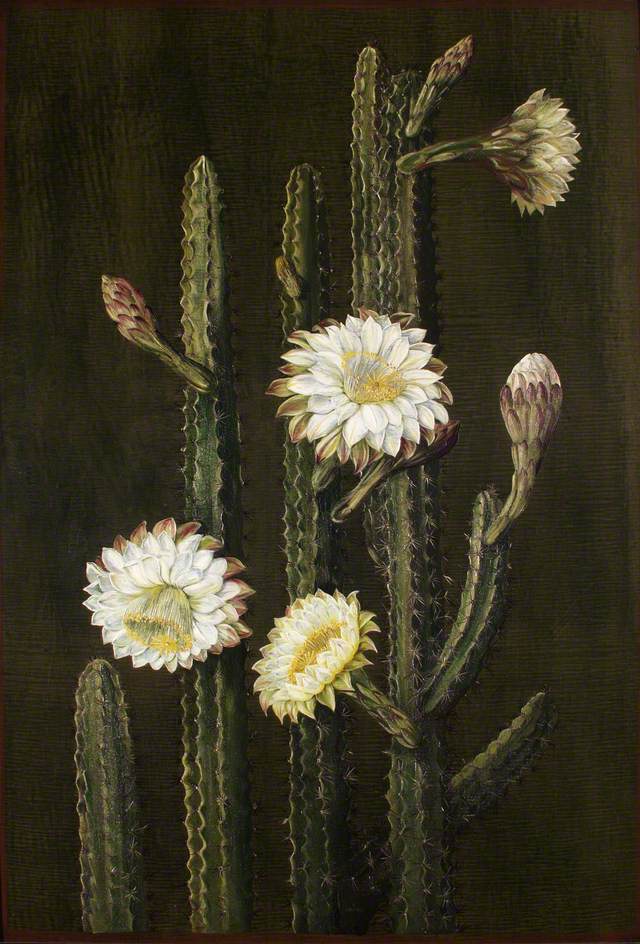On the evening of 16 December 1849, Frederic George Stephens went to Dante Gabriel Rossetti's studio 'to do [Rossetti's] perspective'.[1] One month earlier, Stephens had offered 'to draw in the perspective scale of Gabriel's picture'.[2] The picture was an Annunciation subject that Rossetti had been planning for some time. It's now in the Tate and is known by its slightly fiddly Latin title,
Ecce Ancilla Domini! (meaning 'Behold, the handmaiden of the Lord!'). It's recognised as a defining example of early Pre-Raphaelite painting, frequently discussed, reproduced and exhibited.
 |
| Dante Gabriel Rossetti, Ecce Ancilla Domini! (The annunciation), 1849–50, oil on canvas, 72.4 x 41.9 cm, Tate, London. |
Many years later, William Michael declared that his brother Gabriel 'never paid any attention' to matters of perspective, also recalling that Stephens 'did something to arrange the perspective of [
Ecce Ancilla Domini!]'.[3] Although these recollections were written some forty years later, they are confirmed to some extent by the original diary entries from the winter of 1849 quoted above. That Stephens had a hand in this famous picture's creation has not often been recognised, despite the fact it's recorded in the primary sources about the PRB. The fact is not mentioned in authoritative texts like Virginia Surtees's catalogue raisonné of Rossetti's works (1971), or the Tate's book
Pre-Raphaelite Painting Techniques (2004) which includes a detailed examination of the painting's creation.
 |
| Dante Gabriel Rossetti, Study for 'Ecce Ancilla Domini!', ca. 1849, pencil on paper, 19.4 x 13.7 cm, Tate, London. |
As Jerome McGann notes, one of the most radical aspects of
Ecce Ancilla Domini! is its manipulation of perspective: '[Rossetti's] notorious disconnect with rules of perspective has been poorly understood by later critics and art historians, who fail to see that his impatience with systematic illusionism is a function of his attachment to other techniques of pictorial spatialization'.[4] Elizabeth Prettejohn has also pointed out that '[t]he awkward angle of the perspective recession [...] cannot quite be dismissed as technically inept'.[5] In other words, the artists were rejecting the traditional, Royal Academy-approved methods of composing a picture – particularly one depicting a sacred subject. The oddly sloping floor, the angle of the bed that seems to be tipping towards us, the fact that we can't clearly distinguish where the floor ends and the wall begins – these quirks were inspired by 'primitive' Italian paintings from the thirteenth and fourteenth centuries. Evidently, Stephens was directly involved with adding these quirks into Rossetti's painting – 'doing something to arrange the perspective', as William Michael put it.
Exactly how much 'arranging' Stephens did – how much it was his idea to warp the perspective after the manner of actual pre-Raphaelite paintings – is difficult to know. Was it a pictorial effect that Rossetti knew he wanted to achieve but didn't know how to execute? Why did he ask Stephens to help him – or, perhaps, why did Stephens offer to help? Was Rossetti simply being lazy, taking advantage of his friend's kind offer? What did Stephens bring to Rossetti's Annunciation? So many questions!
A visual clue may come from a painting by Stephens himself,
Mother and child, now also in the Tate:
 |
| Frederic George Stephens, Mother and child, ca. 1854–6, oil on canvas, 47 x 64.1 cm, Tate, London. |
Several art historians have been at pains to point out the awkwardness of Stephens's perspective drawing in this painting – and I agree that there are flaws here (not that they detract from the painting as a whole). The junction of the two walls on the far left doesn't quite make sense, and the one wall does not line up with the corresponding section on the far right. When Stephens makes mistakes, he's dismissed as a bad artist; when similar mistakes are made by Rossetti (or attributed to him), they're radical and thought-provoking, a challenge to the conventions of Western painting. Oddly, though, the 'faults' of Stephens's
Mother and child may help us to navigate the difficulties we're faced with when looking at
Ecce Ancilla Domini!. As is noted in the analysis of the painting in
Pre-Raphaelite Painting Techniques:
... care was not taken to resolve the sense of space in the room. It is not evident where the wall meets the floor or how the bed relates to the wall. There are no drawing lines depicting a skirting board and there are only localised indented lines that nominally mark out this junction running up to, but not behind, the Angel Gabriel, as if this were marked in later.[6]
 |
| The search for the missing skirting board |
Is this lack of 'care' actually evidence of Stephens's hand, and have art historians been mistakenly attributing it to Rossetti this whole time? If so, it's unfortunate for Stephens that his 'faults' as an artist actually indicate his work on something. This is pure speculation on my part, but I'd welcome any thoughts that others might have.
'Perspective purposes'
Actually, Stephens was no stranger to the technicalities of perspective. He had been giving the Rossetti brothers practical lessons in the subject since the summer of 1849. A letter from William Michael in June indicates that Stephens had offered a critique of some cubes which William had drawn as an exercise in correct perspectival drawing.[7] The following month, William and Gabriel called on Stephens 'for perspective purposes'.[8]
Stephens continued to act as a sort of casual art tutor for D. G. Rossetti at around this time, as he later recalled:
[W]anting to improve his knowledge of perspective, a subject of the Royal Academy curriculum to which he had never addressed himself, [Rossetti] came to me to be helped in that respect. That he was a particularly intelligent, but not very diligent learner is shown by the rough sketch of two medieval pages quarrelling. [...] Assuming the airs of a teacher, I had complained that he neglected his work. His reply was this sketch, intended to show what I should incur by continuing to grumble.[9]
The 'rough sketch' Stephens is referring to is now in the collection of Glasgow Museums (see below). The sheet is inscribed on the back in Stephens's hand: 'These sketches were made by D. G. Rossetti upon paper he used while I was teaching him perspective'.[10]
 |
| Dante Gabriel Rossetti, Two pugilists and figure studies, ca. 1849, pencil on paper, 25.9 x 18.2 cm, Glasgow Museums (PR.1955.16.ao) |
 |
| Rotated detail of the above sheet of sketches in the Glasgow Museums collection, showing the parallel lines and a small square drawn by Rossetti during one of Stephens's lessons |
Rossetti probably drew the two quarrelling pages as caricatures of himself and Stephens. The figures are wearing medieval costumes with pointed shoes, similar to those in Millais’s painting
Isabella, for which both Rossetti and Stephens had modelled in 1848–9. The quarrelling figures are superimposed over a series of parallel lines and a small square in the corner – evidence of Rossetti's impatience during the lesson, much to Stephens's frustration!
Stephens's recognised knowledge of perspective does partly explain why Rossetti asked him to help out with
Ecce Ancilla Domini!.
'"Popish" sentiment'
Besides working on the perspective of Rossetti's
Ecce Ancilla Domini!, Stephens made another contribution to its material construction which is small but worth noting. Earlier in 1849, while Rossetti was still planning the painting, he thought about including an archaic inscription copied from one of Stephens's brass rubbings of medieval monuments. Stephens, who had antiquarian interests, had been collecting these rubbings since the mid-1840s. Evidently, the inscription was intended to go on the picture frame.[11] However, it caused a stir with Rossetti's family: 'My people are beginning to wail and lament over the Popish inscription', he wrote to Stephens in August 1849 (
before the painting was even begun).[12] By 'Popish', Rossetti presumably meant that the inscription was in Latin. A Latin text affixed to a Marian-themed painting that was made by an artist with an Italian surname would have carried connotations of monasticism and Roman Catholicism. In a largely Protestant society, such religious practises were controversial – hence Ruskin's desire to distance himself from the PRB's perceived 'monkish follies' in his reviews in 1851. The picture frame which we see today is not the original, but a later replacement designed by Rossetti, so the inscription which Stephens provided has been lost.
Recognising Stephens's role in the making of Rossetti's famed painting helps us to think differently about how the Pre-Raphaelites practised their art. We must remind ourselves that even 'geniuses' like Rossetti (Stephens himself was quick to apply this label to his friend) did not work in heroic or romantic isolation, alone in their studios. Their paintings sometimes depended on acts of fraternal cooperation: in the case of
Ecce Ancilla Domini!, Stephens assisted Rossetti with an aspect of picture-making with which the latter had been struggling: drawing in perspective. These 'collaborations' were often obscured or forgotten after the painting was completed – Rossetti was still responsible for the majority of the work and it was he who signed the canvas. Nevertheless, these hidden collaborations between the young artists resulted in the pictorial innovations which we now associate with Pre-Raphaelitism.
Notes
Parts of this post are drawn from my PhD thesis.
[1] William E. Fredeman, ed.,
The PRB Journal: William Michael Rossetti's Diary of the Pre-Raphaelite Brotherhood 1849–1853 (Oxford: Clarendon Press, 1975), p. 33.
[2] Fredeman,
PRB Journal, 19 November 1849, p. 26.
[3] William Michael Rossetti,
Dante Gabriel Rossetti: His Family-Letters with a Memoir (London: Ellis, 1895), vol. 1, p. 122.
[4] The entry for the painting in the Rossetti Archive:
http://www.rossettiarchive.org/docs/s44.rap.html.
[5] Elizabeth Prettejohn,
The Art of the Pre-Raphaelites (London: Tate, 2000), p. 51.
[6] Joyce H. Townsend, Jacqueline Ridge and Stephen Hackney,
Pre-Raphaelite Painting Techniques: 1848–1856 (London: Tate, 2004), p. 102.
[7] 'Is it a fact that my cubes are erroneous in construction? I was not without vague misgivings at the time. Or are they merely slovenly in handling?'; letter from W. M. Rossetti to Stephens, 30 June 1849, in Roger W. Peattie, ed.,
Selected Letters of William Michael Rossetti (2003), p. 4.
[8] The same letter as in note 6: '[W]e should be with you for perspective purposes on the then Friday week.'
[9] Frederic George Stephens,
Dante Gabriel Rossetti (London: Seeley and Co., 1894), p. 29.
[10] The inscription is noted in Surtees's catalogue raisonné of Rossetti's work (vol. 1, p. 220) and the online Rossetti Archive:
http://www.rossettiarchive.org/docs/s669.rap.html.
[11] Leslie Parris, ed.,
The Pre-Raphaelites (London: Tate, 1984), p. 73; Alastair Grieve's catalogue entry for Rossetti's painting. Inscribing lines of text onto picture frames – poem quotations, bible verses, picture titles – was a common Pre-Raphaelite practice.
[12] Letter from Rossetti to Stephens, 21 August 1849, in William E. Fredeman, ed.,
The Correspondence of Dante Gabriel Rossetti (2002–15), vol. 1, p. 88.




















.jpg/1280px--i---i-_(6306303513).jpg)


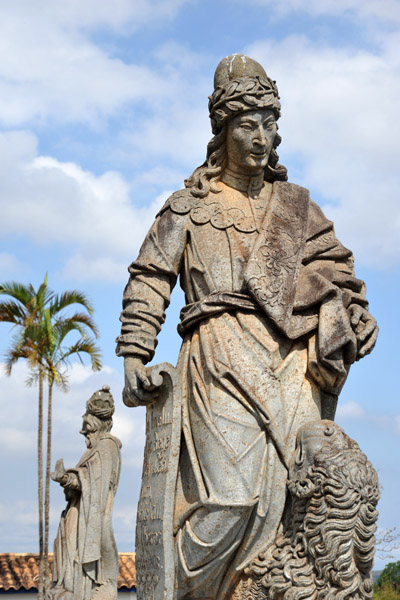
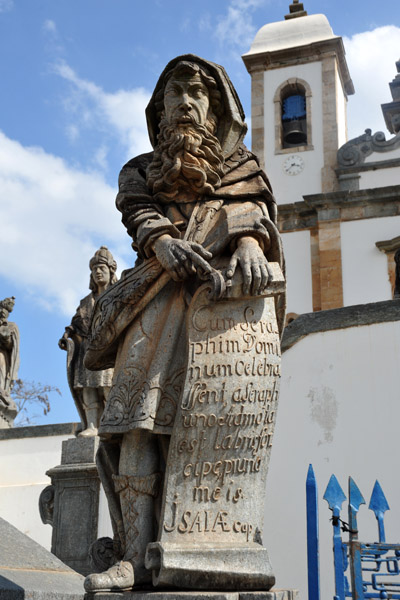
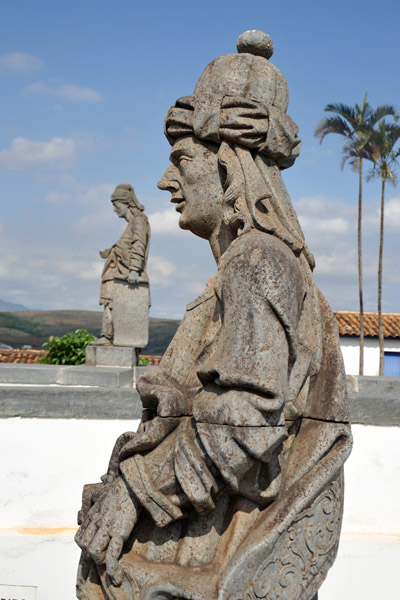
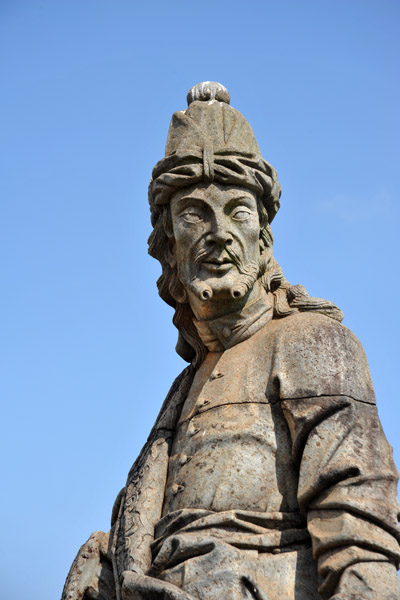





.jpg/1024px-Museu_Mariano_Proc%C3%B3pio_por_Rodrigo_Tetsuo_Argenton_(09).jpg)






